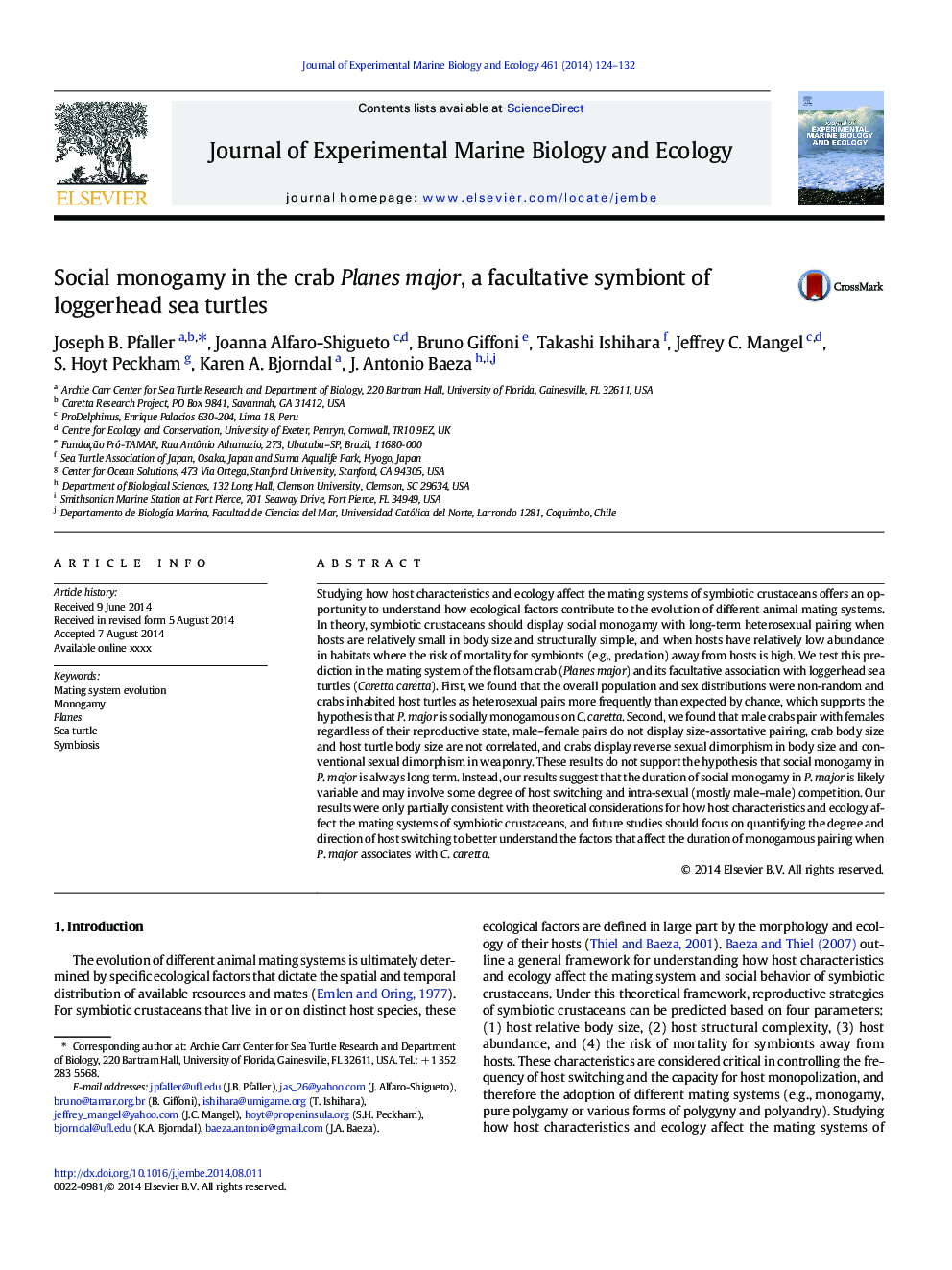| Article ID | Journal | Published Year | Pages | File Type |
|---|---|---|---|---|
| 6303917 | Journal of Experimental Marine Biology and Ecology | 2014 | 9 Pages |
Abstract
Studying how host characteristics and ecology affect the mating systems of symbiotic crustaceans offers an opportunity to understand how ecological factors contribute to the evolution of different animal mating systems. In theory, symbiotic crustaceans should display social monogamy with long-term heterosexual pairing when hosts are relatively small in body size and structurally simple, and when hosts have relatively low abundance in habitats where the risk of mortality for symbionts (e.g., predation) away from hosts is high. We test this prediction in the mating system of the flotsam crab (Planes major) and its facultative association with loggerhead sea turtles (Caretta caretta). First, we found that the overall population and sex distributions were non-random and crabs inhabited host turtles as heterosexual pairs more frequently than expected by chance, which supports the hypothesis that P. major is socially monogamous on C. caretta. Second, we found that male crabs pair with females regardless of their reproductive state, male-female pairs do not display size-assortative pairing, crab body size and host turtle body size are not correlated, and crabs display reverse sexual dimorphism in body size and conventional sexual dimorphism in weaponry. These results do not support the hypothesis that social monogamy in P. major is always long term. Instead, our results suggest that the duration of social monogamy in P. major is likely variable and may involve some degree of host switching and intra-sexual (mostly male-male) competition. Our results were only partially consistent with theoretical considerations for how host characteristics and ecology affect the mating systems of symbiotic crustaceans, and future studies should focus on quantifying the degree and direction of host switching to better understand the factors that affect the duration of monogamous pairing when P. major associates with C. caretta.
Keywords
Related Topics
Life Sciences
Agricultural and Biological Sciences
Aquatic Science
Authors
Joseph B. Pfaller, Joanna Alfaro-Shigueto, Bruno Giffoni, Takashi Ishihara, Jeffrey C. Mangel, S. Hoyt Peckham, Karen A. Bjorndal, J. Antonio Baeza,
